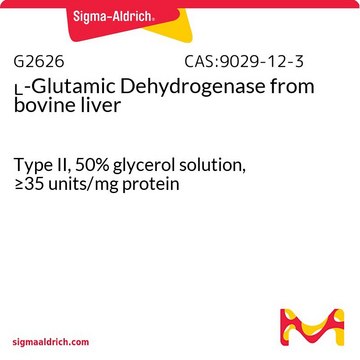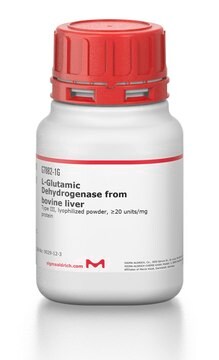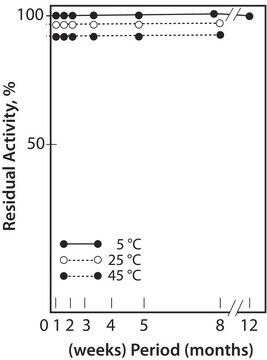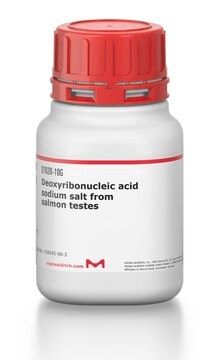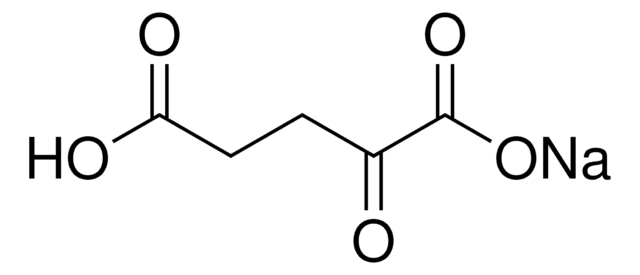G2501
L-Glutamic Dehydrogenase from bovine liver
Type I, ammonium sulfate suspension, ≥40 units/mg protein
Sinônimo(s):
L-GLDH, L-Glutamate:NAD[P]+ Oxidoreductase (deaminating), Glutamate Dehydrogenase from bovine liver
About This Item
Produtos recomendados
tipo
Type I
Nível de qualidade
Formulário
ammonium sulfate suspension
atividade específica
≥40 units/mg protein
peso molecular
310-350 kDa
nº de adesão UniProt
temperatura de armazenamento
2-8°C
Informações sobre genes
cow ... GLUD1(281785)
Procurando produtos similares? Visita Guia de comparação de produtos
Ações bioquímicas/fisiológicas
The bovine enzyme is characterized by three sets of properties:
- It has a reversible concentration-dependent association, producing higher molecular weight forms.
- Forms tight enzyme-reduced coenzyme-substrate ternary complexes whose rates of dissociation modulate the steady-state reaction rates.
- Exhibits a wide variety of effects from the binding of any of a number of nucleotide modifiers.
L-glutamic dehydrogenase catalyzes the conversion of glutamate to α-ketoglutarate.
Definição da unidade
forma física
Nota de análise
substrato
Palavra indicadora
Danger
Frases de perigo
Declarações de precaução
Classificações de perigo
Resp. Sens. 1
Código de classe de armazenamento
11 - Combustible Solids
Classe de risco de água (WGK)
WGK 3
Ponto de fulgor (°F)
Not applicable
Ponto de fulgor (°C)
Not applicable
Equipamento de proteção individual
Eyeshields, Gloves, type N95 (US)
Escolha uma das versões mais recentes:
Já possui este produto?
Encontre a documentação dos produtos que você adquiriu recentemente na biblioteca de documentos.
Os clientes também visualizaram
Artigos
Instructions for working with enzymes supplied as ammonium sulfate suspensions
Nossa equipe de cientistas tem experiência em todas as áreas de pesquisa, incluindo Life Sciences, ciência de materiais, síntese química, cromatografia, química analítica e muitas outras.
Entre em contato com a assistência técnica